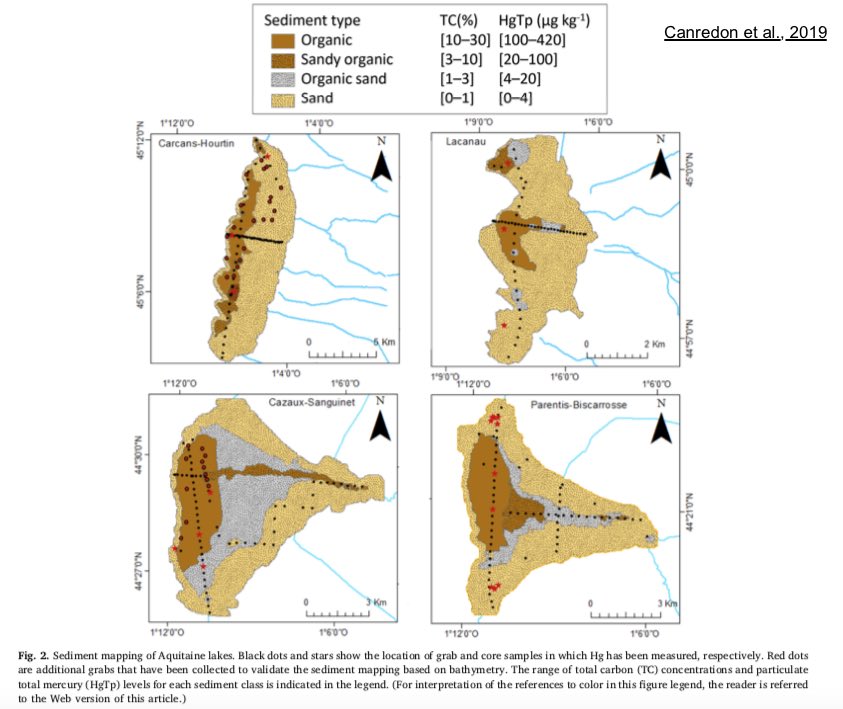AquaVIT
|
Article scientifique Canredon A., Anschutz P., Buquet D., Charbonnier C., Amouroux D., Tessier E., Poirier D., et al. Lake sediment mercury biogeochemistry controlled by sulphate input from drainage basin Applied Geochemistry, 2019, 104, 135-145. Mercury (Hg) and methyl mercury (MeHg) concentrations have never been measured in sediments of coastal lakes of Aquitaine, although high concentrations of Hg have been measured in fish. Our objective was to characterize benthic biogeochemical processes and the distribution of Hg in lake sediments and to connect these results with fish contamination. For this, we mapped and characterized sediments. We measured sediment Hg and MeHg content, and biogeochemical parameters. We identified organic deposits in deep areas, and sandy sediments in shallow areas. Sediments were anoxic below the sediment–water interface. The average Hg concentration in organic sediment was 213 μg kg−1 dry weight. Sandy sediments had an average Hg concentration of 4 μg kg−1 dw. We measured concentrations below 6 μg kg−1 dw in sediments from streams that drain the catchment. Similar concentrations in the four lakes suggest that the source of total Hg was not a point source in a given lake. The highest MeHg concentrations were found in the upper centimetres of organic sediments, where sulphate reduction occurred. MeHg represented 2.53% of total Hg for Lake Carcans-Hourtin, less in other lakes. The proportion of MeHg in sediment followed lake water sulphate concentrations. High sulphate concentrations resulted from agricultural activity in the Lake Carcans-Hourtin catchment. Our results corroborate the hypothesis that Hg methylation is linked to sulphate-reducing activity. High fluxes of sulphate from a drainage basin may induce large proportions of potentially bioavailable MeHg in lake sediment, even in non-polluted areas. The Hg methylation activity in the sediment reflected the exposure of predatory fish to MeHg.Keyword: Mercury methylation, Fish contamination, Aquatic sediment, Sulphate, Freshwater lake A retrouver ici: https://www.sciencedirect.com/science/article/pii/S0883292719300861  |